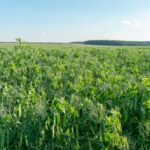Sustainable farming is critical for preserving natural resources, improving yields, and ensuring long-term profitability. However, many South African farmers inadvertently make mistakes that undermine their sustainability goals. Understanding these common pitfalls can help farmers adopt better practices and achieve a balance between productivity and environmental stewardship.
One common mistake is neglecting soil health. Many farmers overuse chemical fertilizers, which can degrade soil quality over time. Healthy soil is the foundation of sustainable farming, as it supports plant growth and retains water. Farmers should focus on organic matter addition, crop rotation, and reduced tillage to improve soil health and structure.
Another issue is improper water management. In South Africa’s water-scarce environment, inefficient irrigation systems and practices waste this precious resource. Farmers often fail to monitor water usage or maintain irrigation equipment, leading to overwatering or underutilization. Investing in drip irrigation systems, rainwater harvesting, and water audits can enhance efficiency and reduce waste.
Failure to diversify crops is also a frequent error. Monocropping depletes soil nutrients, invites pests, and increases vulnerability to market fluctuations. Sustainable farming encourages crop diversification, intercropping, and the use of cover crops to enhance soil fertility and reduce dependency on synthetic inputs.
Ignoring the importance of integrated pest management (IPM) is another oversight. Many farmers rely solely on chemical pesticides, which harm beneficial insects, pollinators, and the environment. IPM practices, such as using natural predators, crop rotation, and selective pesticide application, provide long-term pest control solutions.
Farmers often make the mistake of not incorporating renewable energy solutions into their operations. Overreliance on fossil fuels increases costs and carbon emissions. Solar-powered irrigation, wind turbines, and energy-efficient equipment can significantly reduce a farm’s environmental footprint while lowering operational expenses.
Overlooking local biodiversity is a critical error. Clearing natural habitats for farming disrupts ecosystems and reduces the presence of beneficial organisms. Sustainable farming promotes preserving natural vegetation, creating buffer zones, and planting indigenous species to maintain biodiversity.
Another mistake is poor waste management. Burning crop residues or disposing of farm waste improperly contributes to pollution and greenhouse gas emissions. Farmers should focus on composting, recycling, and turning waste into energy or organic fertilizers to minimize their environmental impact.
Failing to involve the local community is a missed opportunity for many farmers. Sustainable farming thrives on collective efforts, knowledge sharing, and community buy-in. Farmers should engage with local stakeholders, participate in cooperative projects, and provide training to improve farming practices and social equity.
Insufficient record-keeping is a less obvious but significant mistake. Without proper records, farmers cannot track resource usage, assess the success of sustainability initiatives, or identify areas for improvement. Maintaining detailed logs of inputs, yields, and practices helps optimize operations and secure certifications for sustainable products.
Lastly, underestimating the impact of climate change is a major oversight. Many farmers do not adapt their practices to changing weather patterns, which increases risks to crop and livestock production. Using drought-resistant crops, diversifying income streams, and investing in climate-resilient infrastructure are essential for long-term sustainability.
By addressing these common mistakes, South African farmers can improve their environmental impact, enhance productivity, and secure the future of agriculture. Sustainable farming is not just an ethical choice; it is a necessity in the face of mounting environmental challenges and resource constraints.
Join 'Farmers Mag' WhatsApp Channel
Get the latest Farming news and tips delivered straight to your WhatsApp
CLICK HERE TO JOIN






